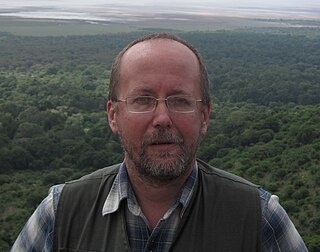
The International Energy Agency (IEA) is a Paris-based autonomous intergovernmental organisation, established in 1974, that provides policy recommendations, analysis and data on the entire global energy sector. The 31 member countries and 13 association countries of the IEA represent 75% of global energy demand.
Scenario planning, scenario thinking, scenario analysis, scenario prediction and the scenario method all describe a strategic planning method that some organizations use to make flexible long-term plans. It is in large part an adaptation and generalization of classic methods used by military intelligence.
Morphological analysis or general morphological analysis is a method for exploring possible solutions to a multi-dimensional, non-quantified complex problem. It was developed by Swiss astronomer Fritz Zwicky.

The National Intelligence Council (NIC), established in 1979 and reporting to the Director of National Intelligence, bridges the United States Intelligence Community (IC) with policy makers in the United States. The NIC produces the "Global Trends" report every four years beginning in 1997, for the incoming President of the United States. Their work is based on intelligence from a wide variety of sources that includes experts in academia and the private sector. NIC documents and reports which are used by policymakers, include the National Intelligence Estimate and the Global Trends reports delivered every four years. The NIC's goal is to provide policymakers with the best available information, that is unvarnished, unbiased and without regard to whether the analytic judgments conform to current U.S. policy.
Economic forecasting is the process of making predictions about the economy. Forecasts can be carried out at a high level of aggregation—for example for GDP, inflation, unemployment or the fiscal deficit—or at a more disaggregated level, for specific sectors of the economy or even specific firms. Economic forecasting is a measure to find out the future prosperity of a pattern of investment and is the key activity in economic analysis. Many institutions engage in economic forecasting: national governments, banks and central banks, consultants and private sector entities such as think-tanks, companies and international organizations such as the International Monetary Fund, World Bank and the OECD. A broad range of forecasts are collected and compiled by "Consensus Economics". Some forecasts are produced annually, but many are updated more frequently.
Futurists are people whose specialty or interest is futurology or the attempt to systematically explore predictions and possibilities about the future and how they can emerge from the present, whether that of human society in particular or of life on Earth in general.

Futures studies, futures research, futurism, or futurology is the systematic, interdisciplinary and holistic study of social/technological advancement, and other environmental trends; often for the purpose of exploring how people will live and work in the future. Predictive techniques, such as forecasting, can be applied, but contemporary futures studies scholars emphasize the importance of systematically exploring alternatives. In general, it can be considered as a branch of the social sciences and an extension to the field of history. Futures studies seeks to understand what is likely to continue and what could plausibly change. Part of the discipline thus seeks a systematic and pattern-based understanding of past and present, and to explore the possibility of future events and trends.
Articles in economics journals are usually classified according to JEL classification codes, which derive from the Journal of Economic Literature. The JEL is published quarterly by the American Economic Association (AEA) and contains survey articles and information on recently published books and dissertations. The AEA maintains EconLit, a searchable data base of citations for articles, books, reviews, dissertations, and working papers classified by JEL codes for the years from 1969. A recent addition to EconLit is indexing of economics journal articles from 1886 to 1968 parallel to the print series Index of Economic Articles.

In futurology, especially in Europe, the term foresight has become widely used to describe activities such as:
Futures techniques used in the multi-disciplinary field of futurology by futurists in Americas and Australasia, and futurology by futurologists in EU, include a diverse range of forecasting methods, including anticipatory thinking, backcasting, simulation, and visioning. Some of the anticipatory methods include, the delphi method, causal layered analysis, environmental scanning, morphological analysis, and scenario planning.
Technology forecasting attempts to predict the future characteristics of useful technological machines, procedures or techniques. Researchers create technology forecasts based on past experience and current technological developments. Like other forecasts, technology forecasting can be helpful for both public and private organizations to make smart decisions. By analyzing future opportunities and threats, the forecaster can improve decisions in order to achieve maximum benefits. Today, most countries are experiencing huge social and economic changes, which heavily rely on technology development. By analyzing these changes, government and economic institutions could make plans for future developments. However, not all of historical data can be used for technology forecasting, forecasters also need to adopt advanced technology and quantitative modeling from experts’ researches and conclusions.

Andrey Vitalievich Korotayev is a Russian anthropologist, economic historian, comparative political scientist, demographer and sociologist, with major contributions to world-systems theory, cross-cultural studies, Near Eastern history, Big History, and mathematical modelling of social and economic macrodynamics.
Backcasting is a planning method that starts with defining a desirable future and then works backwards to identify policies and programs that will connect that specified future to the present. The fundamentals of the method were outlined by John B. Robinson from the University of Waterloo in 1990. The fundamental question of backcasting asks: "if we want to attain a certain goal, what actions must be taken to get there?"
The Josef Korbel School of International Studies at the University of Denver is a professional school of international affairs offering undergraduate, graduate, and doctoral degrees. It is named in honor of the founding dean, Josef Korbel, father of former U.S. Secretary of State Madeleine Albright.
The following outline is provided as an overview of and topical guide to futures studies:
Barry B. Hughes is the John Evans Professor at the University of Denver, Josef Korbel School of International Studies. He is a senior scientist, mentor and founder of the Pardee Center for International Futures, a center for long-term, systemic thinking on political, economic, social and environmental issues. Hughes has spent the majority of his career developing the International Futures global integrated assessment model. This model has been used by a wide range of international organizations and governments, including the European Commission, the National Intelligence Council, the United States Institute of Peace and the United Nations Environment Programme.
Cross-impact analysis is a methodology developed by Theodore Gordon and Olaf Helmer in 1966 to help determine how relationships between events would impact resulting events and reduce uncertainty in the future. The Central Intelligence Agency (CIA) became interested in the methodology in the late 1960s and early 1970s as an analytic technique for predicting how different factors and variables would impact future decisions. In the mid-1970s, futurists began to use the methodology in larger numbers as a means to predict the probability of specific events and determine how related events impacted one another. By 2006, cross-impact analysis matured into a number of related methodologies with uses for businesses and communities as well as futurists and intelligence analysts.
The Institute for Security Studies, also known as ISS or ISS Africa, described itself as follows: "an African organisation which aims to enhance human security on the continent. It does independent and authoritative research, provides expert policy analysis and advice, and delivers practical training and technical assistance." Their areas of research include transnational crimes, migration, maritime security, development, peacekeeping, peacebuilding, crime prevention, criminal justice, conflict analysis and governance. It is the largest independent research institute in Africa dealing with human security and is headquartered in Pretoria, South Africa, with offices in Kenya, Ethiopia and Senegal. In 2019, it was ranked 116th by the Global Go To Think Tanks Report and 55th among think tanks outside the United States.
Jerome C. Glenn is a futurist who serves as the executive director of the Millennium Project. He has been the executive director of the American Council for the United Nations University (1988–2007) and the deputy director of Partnership for Productivity International.

Mathew James Burrows is an American intelligence and strategic foresight expert and author.









